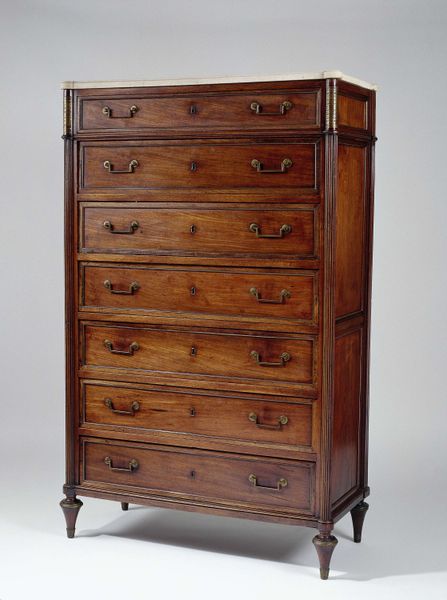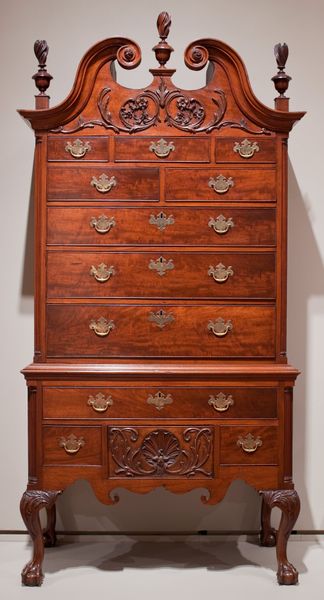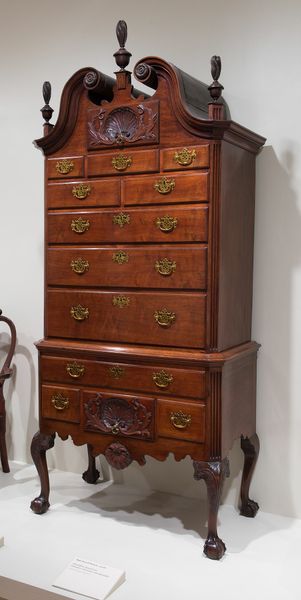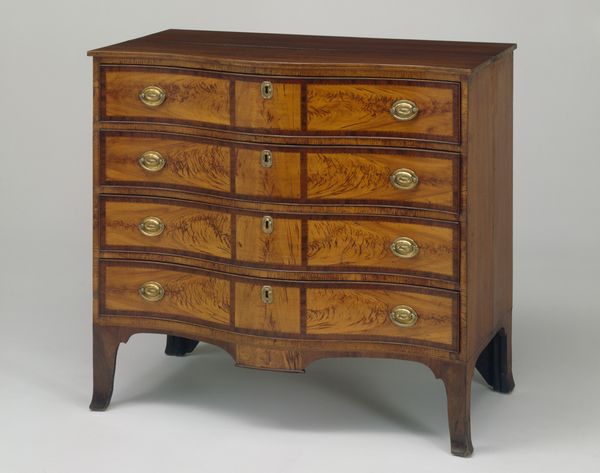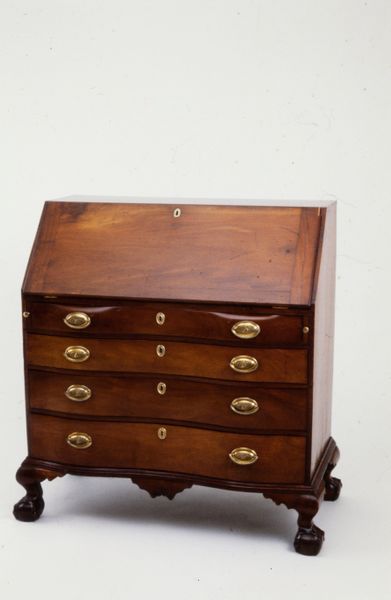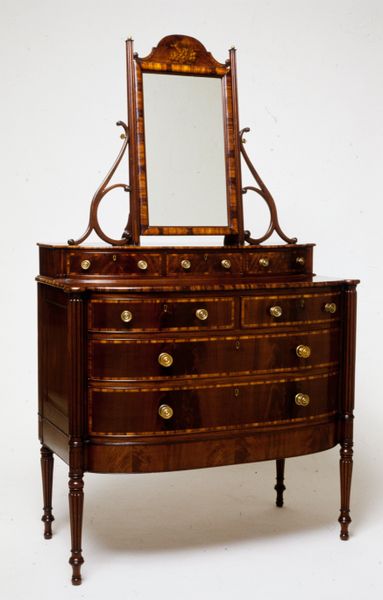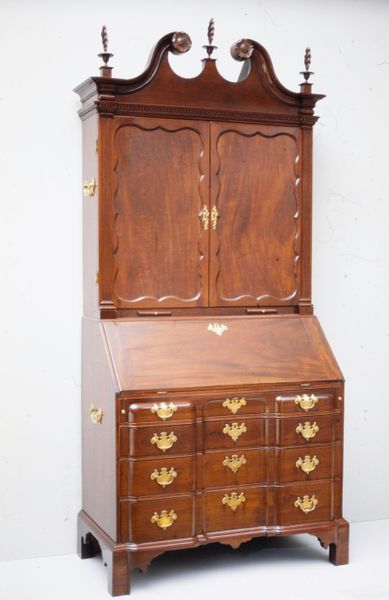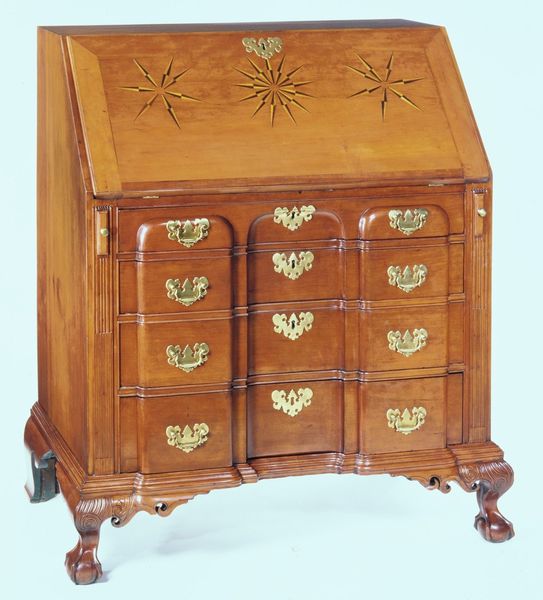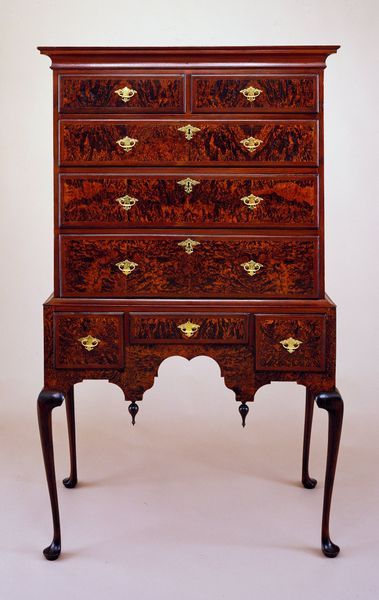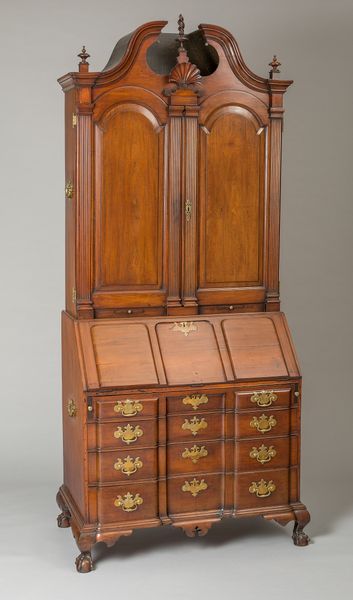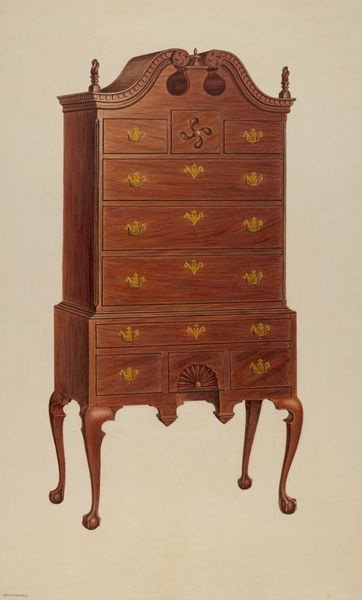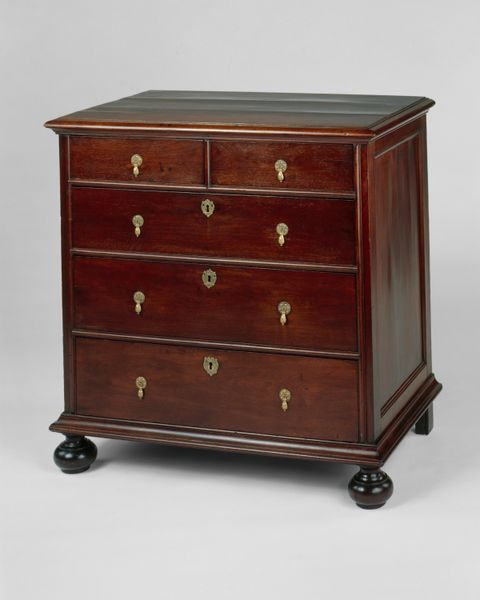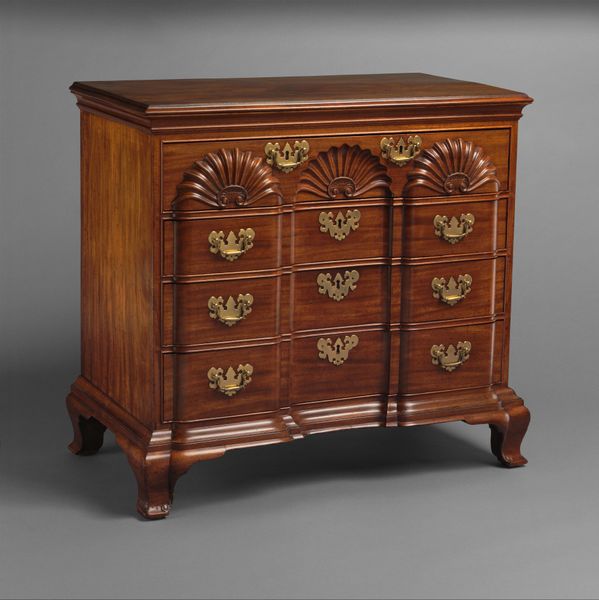
#
simple decoration style
#
natural stone pattern
#
wood texture
#
pottery
#
furniture
#
traditional architecture
#
stoneware
#
wooden interior design
#
wall hanging
#
showhome propping
#
wooden texture
#
united-states
Dimensions: 84 1/2 x 42 3/8 in. (214.63 x 107.63 cm)
Copyright: Public Domain
Curator: This impressive piece is a "Chest on Chest," crafted sometime between 1770 and 1790, currently residing here at the Minneapolis Institute of Art. The maker, unfortunately, remains anonymous. Editor: It strikes me immediately as...well, assertive. It’s a substantial piece of furniture. All those drawers, that deep wood grain – it's like a statement of wealth and perhaps a certain power. Curator: Indeed. The “Chest on Chest”, was more than mere furniture, it was a status symbol during the late 18th century. Let's consider the context: these pieces weren’t mass-produced; they were crafted, usually by highly skilled artisans, and acquired by families affluent enough to commission such works. The choice of wood, the intricate carving...these spoke volumes about social standing. Editor: I’m intrigued by the choice of embellishments: those sunburst and shell motifs, are they merely decorative, or do they carry deeper symbolic weight? Were they meant to evoke ideas of prosperity or connection to nature? It's interesting that the decorations could be seen through the lens of gender too: it was frequently the women of the house that dealt with organizing the contents of these dressers; how were the choices women were able to make impacted by access to such furniture pieces? Curator: Symbolism abounds, particularly those fan carvings, a hallmark of the period and often interpreted as a sign of good fortune and divine favor. This sort of detailed carving requires immense skill; skills handed down through apprenticeships often limited by race or gender during this era in America. This also impacts who got to shape and design our built environments. The very presence of this chest speaks to complex socioeconomic realities. Editor: So, what about the political imagery embedded within it? Are we to assume it’s merely a passive receptacle or an active participant in disseminating ideology of the dominant classes? Curator: Excellent point. These were often placed prominently in homes. Thus it can be viewed as performing a crucial role in solidifying power. Each drawer held not just garments, but stories of those that benefited most from an era of stark social inequalities. Editor: Ultimately, then, the "Chest on Chest" is more than meets the eye. A tangible emblem of socio-economic stratification and privilege, expertly crafted to quietly underscore hierarchical distinctions within late 18th-century America. Curator: Precisely. By viewing it through that multifaceted lens, we appreciate the complex dialogues that historical artworks provoke.
Comments
minneapolisinstituteofart almost 2 years ago
⋮
This chest-on-chest descended in the Dodge family to Edwin Noyes Dodge, whose wife donated it to the Institute. While the object was made in New England, it came to the Midwest when the Dodge family immigrated to Minnesota in the 19th century. The style of this chest-on-chest suggests that it was made in New London County, Connecticut, and probably Colchester, as it displays characteristics of 18th-century furniture from that vicinity, including the block-and-shell front; the curled, beaded molding on the feet; the compass carving at the tops of the side pilasters; the rosettes on the broken pediment; and the whorl in the top center drawer.
Join the conversation
Join millions of artists and users on Artera today and experience the ultimate creative platform.
